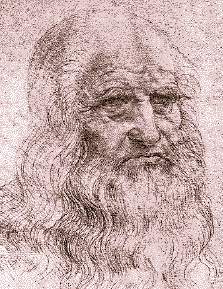|
 |
 |
 |
| Leonardo da Vinci |
| �F��� |
| ���O�G��L |
| ��O�GOthers ��L |
| ���ݮɴ��GMedieval Period ���@�� |
| ��ƴ��Ѫ̡GKate Liu/�B����; photo credit - University of California Museum of Paleontology |
|
|
Freud on Leonardo
from Art and Psychoanalysis
Laurie Schneider Adams
�@
"Born in 452 in the little village of Vinci outside Florence, Leonardo was the illegitimate son of a notary, Ser Piero, and a peasant girl, Caterina. Leonardo lived with Caterina . Leonardo lived with Caterina for approximately five years before entering the house of his father, who had in the meantime married Donna Albiera. Later--at what age is not known--Leonardo was apprenticed to Andrea del Verrochhio, a leading Florentine artist. p. 15
Mona Lisa --the woman who posed for Mona Lisa smile in a way that reawakened the artist's repressed memory of his mother's smile.
Eissler related the ambiguity of Mona Lisa's smile to the artist's ambivalence toward his mother. [Duchamp's corrected readymade.]
[Leonardo's tendencies to art and scientific investigation.]
|
|
Click on the picture to see a larger version.
The Virgin & Child with St. Anne, Musee du Louvre, Paris.
|
sublimation
"Freud explains Leonardo's psychology in terms of classical drive theory as follows. His instinct for loving was transformed first into insatiable research, which later substituted for creating art. What had begun, in Leonardo's case, as investigation in the service of art took over and became the master. Freud's discovery of infantile led him to connect adult research with childhood sexual curiosity. In Leonardo's case, Freud concludes, the artist renounced passion and emotion by redirecting affective energy into intellectual investigation. p. 16
p. 25 [his instinctual sexual curiosity sublimated into science 25
missing father (1)
For Freud, the father's absence was a crucial factor in the development of Leonardo's homosexuality. . . .
a boy whose father is absent (either literally or emotionally) is apt to enhance his identification with his mother; he may emulate his mother in choosing a male love object. In this way, the boy "finds the object of his love along the path of narcissism." p. 20-21
Mother's smile -- Mona Lisa's smile
Freud connected the repetition of the smile in this painting to the unusual youthfulness of Saint Anne, Mary's mother.
�@
|
St. John's androgenous image
Freud attributed the mysterious smile in that picture to having found the secret of love, which he keeps from the observer. ..."It is possible," Freud concluded this section, "that . . . Leonardo has denied the unhappines of his erotic life and has triumphed over it in his art., by representing the wishes of the boy, infatuated with his mother, as fulfilled in this blissful union of the male and female natures." 23
father's influence (2)
Freud also reports that once Leonardo completed a painting, he ceased to care about it--a repetition of his father's early absences.
�@
|

Click on the picture to see a larger version. Saint John the Baptist, Musee du Louvre, Paris. 71KB
|
[many arguments against Freud]
e.g. Schapiro -- " I believe this study of Freuds book points to weakness which will be found in other works by psychoanalsis in the cultural fields: the habit of building explanations of complex phenomena on a single datum and the too little attneion given to history and social situation in dealing with individuals and even with individuals and even with the origin of customs, beliefs and institutions.
[Back to Pychobiography]
|
|
|
|
|
